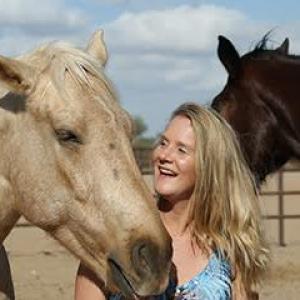Think about it. Water is in those thunderheads that climb overhead like a mountainous sky-world. It takes the form of snow and ice; of geyser steam and early-morning fog; it fills the muscular Yellowstone River of spring, and lingers in the slow river of August.
Photographing water in any or all of those forms can really get your creative juices flowing. Three basic tips can improve the quality of those photographs.
First, white water and water with a lot of glare on it can fool your camera meter in the same way that snow can. Be aware of this and adjust your exposure accordingly, usually by allowing for a couple of stops worth of more light. Cameras vary with how they allow you to do this, so you need to understand your camera functions. Film is relatively inexpensive so don’t hesitate to bracket your exposure. Digital shooters can view the image and make corrections right on the spot.
Second, use filters. A polarizing filter is a very useful tool around water. It can minimize or eliminate unwanted glare. The filter performs this task most efficiently at an angle of approximately thirty degrees to the plane of your subject. Like a fisherman’s polarized sun glasses, this filter can allow you to see, and thus, photograph objects (like fish) just below the water’s surface. Like most filters the polarizing filterwill absorb some of the available light, so you will need to make the necessary exposure adjustments or set the camera up to do that for you.
When photographing in color, if you want to add mood to your water images, a blue filter like an 82 series will cool your image; a light orange-red like an 81 series will warm it. Just remember, when you use a colored filter it will add a cast to the entire photograph and not just the water. And, don’t forget that these filters will also absorb some of the available light.
Third, work with your camera’s shutter speed. It’s one of the most important things to keep in mind when photographing water because it can change the feeling and look of the image you capture. To freeze water in motion stay with shutter speeds in excess of 1/125th of a second. To blur the motion of a rivulet or rapid, giving it a cottony-look, use a slow shutter speed. Start with something in the neighborhood of 1/30th of a second and use progressively slower speeds for varying effect. Don’t forget to use your tripod.
Can’t get shutter speeds slow enough even with your lens stopped down to the minimum aperture setting? Try shooting when there is less available light. Or use a lower ISO film or film speed setting. A neutral density filter may allow you to better access those slower shutter speeds. These filters reduce the amount of light transmitted by your lens and are available in varying strengths. The greater the strength, the more light they block. Because they reduce light transmission evenly across the color spectrum, they will not cause a color shift in your image.
Whatever you do in photographing water, pack along your curiosity and your sense of wonder about this changeable element that nourishes all life. During a rainshower everything can appear veiled, as if seen from behind a translucent curtain. Photographs you shoot now will seem softened and just slightly out of focus. After the storm, explore out of doors for jewels of water caught in spider webs or on a Douglas Fir’s limber new needles. Use a macro lens to capture reflections caught in lingering raindrops cupped by bowled lupine leaves.
In bodies of water, watch for interesting reflections. Photograph the contrast between a little riff of ripples and quieter water in a pond. Capture the climb and fall of water over a river rock. Check backwater flows for interesting patterns of foam, or water-carried twigs and leaves.
Let photographing water introduce you to a refreshing way of seeing and experiencing our world.
 Jenna Caplette migrated from California to Montana in the early 1970s, first living on the Crow Indian reservation, then moving to Bozeman where she owned a downtown retail anchor for eighteen years. These days she owns Bozeman BodyTalk & Energetic Healthcare, hosts a monthly movie night, teaches and writes about many topics.
Jenna Caplette migrated from California to Montana in the early 1970s, first living on the Crow Indian reservation, then moving to Bozeman where she owned a downtown retail anchor for eighteen years. These days she owns Bozeman BodyTalk & Energetic Healthcare, hosts a monthly movie night, teaches and writes about many topics.



 These courses may be taken together or individually, but do require a pre-requisite. To learn more about what each course entails and the programs and horses that will be a part of the educational scope, follow the link:
These courses may be taken together or individually, but do require a pre-requisite. To learn more about what each course entails and the programs and horses that will be a part of the educational scope, follow the link: